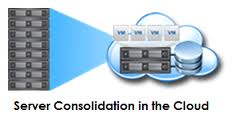Cost benefits associated with cloud computing
Many people wonder what is it that propelled cloud computing to its current zenith? Technologists all over the world feel that economics have been the catalyst for the phenomenal growth of cloud computing and its adoption around the world. In 2011 it looks like a cloud is on the radar of the entire top notch Chief Information Officers or CIO across the globe. The biggest benefit of cloud that has been cited is cost savings but there is a way to maximize these savings. So how exactly can your business maximize the profit? Let us take a look at the following key areas.
There is a significant reduction in labor costs- Once an organization plans to move to a public cloud, their IT department becomes more efficient. Earlier, the main focus of the staff was on automated services which are now taken care of in the cloud. Due to these standardization and automation, manpower is put to better utilization as they are freed from these automated tasks.
Value for money and faster processing- With physical resources, the time and money spent on the installation is usually high. But when you invest in cloud, in just a few hours, the entire equipment will already be set up for you. Another advantage is that the entire processing happens in a short duration of time. This kind of elasticity and the installation process seems to score high points for people who opt for cloud computing.

Pay per use model- When organizations invest in public cloud they know they just need to rent the services. In this way, companies can save on unused resources, postpone the purchase part and also the testing options without worrying about the payment. Public cloud is based on pay per use, for example, you pay for the number of mailboxes per month, the amount of terabytes storage, or how many virtual hours you require and have utilized.
Simplify capital investment- Cloud computing is also useful when it comes to business process simplification. When organizations plan to move to clouds they save a lot on annual IT budgets that include salaries, maintenance and upgrade costs.

Energy savings and reduced real estate- When you move into cloud an entire data center is removed altogether. This helps in saving up energy as well. There are companies that have lots of servers spread in many data centers. This definitely takes up space. These servers add to energy consumption. When you consolidate these servers and move to cloud computing, you know that not only is the real estate cost reduced but you also contribute to the environment by cutting down on the heat.

When companies set up data centers they acquire expensive equipment that add to their capital expenditure. This amount is always on the higher end. But the cost of the equipment depreciates over a time frame. When a company invests in cloud computing, their one-time expense is spread across different operation cycles. In this way the company is able to get value for their money.

So from the entire discussion, one can conclude that cloud savings are way higher than the ones organizations achieve via their data centers.


















